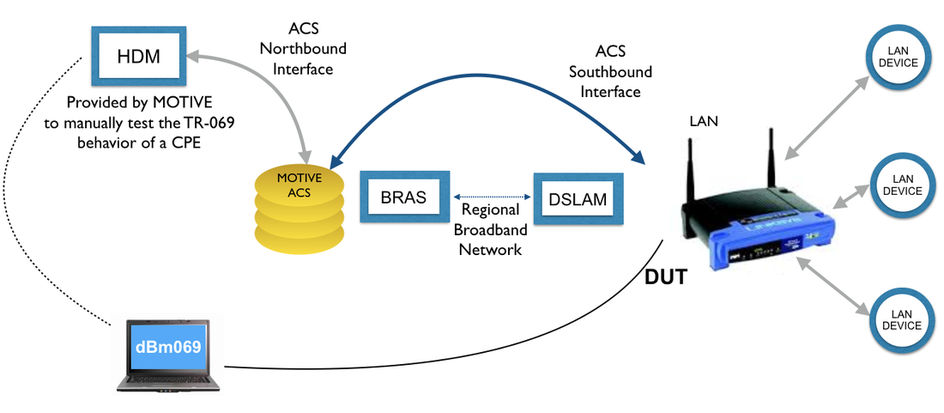Service Providers TR-069 validation process
Telecom Operators are deploying new services continuously. New services need more performant CPEs, better in functionalities, and cheaper prices. This process never stops. Once a CPE is ready for deployment, new ideas are coming and a new CPE is in the pipeline. The validation process of a new CPE has a lot of similarities with an R&D process. The Telecom Operator usually counts with very skilled engineers who work in parallel with several technologies, but it is not possible to be an expert in everything and work everyday executing test plans in parallel.
Targets are clear: more Know-How and more productivity, and in order to achieve them, the need of automation tools arises.
Targets are clear: more Know-How and more productivity, and in order to achieve them, the need of automation tools arises.
The facts affecting any validation
If your team faces TR-069 CPE validation, then there are some questions that are present during all the project:
- Is your test scenario stable and robust enough?
- Are the result of the TR-069 tests performed reliable and fully trazable?
- When the CPE arrives to the Operator Lab, is it ready enough to start validation tests? or should it be rejected?
- Which are the first test that should be performed when a CPE arrives for validation?
- Which tests should be performed? specific tests that fulfills the Operator needs? or just a conformance test following ATP-069?
- Do you have an external Lab that performs TR-069 tests? Are their technicians skilled enough and understand the TR-069 technique?
- Do Testers perform tests always under the same conditions? and as TR-069 specifies? (and not as the vendor specifies!)
- Is TTM (time to market) an important issue for you?
If these and other questions come to your mind then you should take a look to the tools that we have developed to help Service Providers to perform the CPE TR-069 validation.
dBm Ingenieros offers a tool for Pre-Certification and also for Operator Validation.
- Is your test scenario stable and robust enough?
- Are the result of the TR-069 tests performed reliable and fully trazable?
- When the CPE arrives to the Operator Lab, is it ready enough to start validation tests? or should it be rejected?
- Which are the first test that should be performed when a CPE arrives for validation?
- Which tests should be performed? specific tests that fulfills the Operator needs? or just a conformance test following ATP-069?
- Do you have an external Lab that performs TR-069 tests? Are their technicians skilled enough and understand the TR-069 technique?
- Do Testers perform tests always under the same conditions? and as TR-069 specifies? (and not as the vendor specifies!)
- Is TTM (time to market) an important issue for you?
If these and other questions come to your mind then you should take a look to the tools that we have developed to help Service Providers to perform the CPE TR-069 validation.
dBm Ingenieros offers a tool for Pre-Certification and also for Operator Validation.
Pre-CERTIFICATION
Pre-Certification should be made to prepare the CPE for the final Validation. This is a process that can be done by any of the players working in a CPE validation (Service Provider, Vendor or Lab), and should allow to get a CPE ready for final Validation and 90% of probabilities for final test success.
Internal Operator Validation
Operator Final Validation is the final test to warranty that the CPE will work correctly in the Service Provider Plant. This means that the Final Operator Validation should be made using the same ACS scenario that the Operator has deployed in his Plant.
dBm069-XXX (other ACS scenarios are ready to be implemented by customer request)





